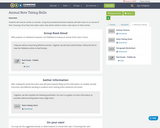
A lesson plan for early elementary research
- Subject:
- English Language Arts
- Material Type:
- Lesson
- Author:
- Kallam McKay
- Date Added:
- 08/05/2020

A lesson plan for early elementary research

Learn about the structure and function of living organisms by drawing an imaginary animal in the Take the Stage game show, ANIMAL SURVIVAL! Viewers become contestants on a game show and are challenged to draw an imaginary animal that could live and survive in either the desert, ocean, or the arctic tundra. When drawing the imaginary animal, the contestants write out two distinct structures and a function for each of the structures that help it survive. Learning Objective: Compare the structures and functions of different species that help them live and survive in a specific environment.
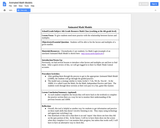
To give students need more practice with the relationship between factors and multiples.
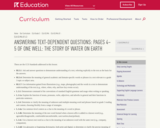
In Work Time A, students participate in a Language Dive that guides them through the meaning of a sentence from One Well. The focus of this Language Dive is on the function of nouns (L.3.1a). Students then apply their understanding of the meaning and structure of this sentence when determining the main idea of the text and when determining the function of nouns in One Well and during the Mid-Unit 1 Assessment. Refer to the Tools page for additional information regarding a consistent Language Dive routine.
In Work Time B, students reread One Well to answer text-dependent questions, including questions about vocabulary (RI.3.1, RI.3.4, L.3.4).This is meant to help students gain a deeper understanding of the first two pages of the text and to use information gained from the illustrations to demonstrate understanding of the words (RI.3.7). Pay careful attention to this routine in order to apply it in subsequent lessons.
To increase student independence with reading and analyzing texts in Module 4, students dig in deeper to determine the main ideas and supporting details of pages of One Well in triads and pairs throughout the remainder of the unit, rather than through teacher-led close reads.
In the Closing, students contribute to the class KWEL chart--repeating the routine from Lesson 1. Refer to this lesson for more detail as necessary.
In this lesson, students focus on working to become effective learners with a characteristic of their choice.
Students practice their fluency by following along and reading silently as the teacher reads One Well aloud in Opening A.
The research reading that students complete for homework will help build both their vocabulary and knowledge pertaining to water. By participating in this volume of reading over a span of time, students will develop a wide base of knowledge about the world and the words that help describe and make sense of it
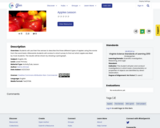
Students will use their five senses to describe the three different types of apples using the words from the word bank. Afterwards students will conduct a short survey to find out which apple was liked by most students. The results will be shown by drawing a pictograph.
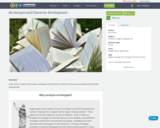
In this lesson, students will analyze archetypes and how they contribute to universal story telling and character development.

This lesson could be done with most adults and older kids. It is especially good forelderly women, as many of them have fond memories of sewing and fabric crafts,yet they can no longer do those crafts due to vision or fine motor impairments.This project allows them to make something beautiful with fabric that doesn’tinvolve any sewing.

ART BRIDGES: Lesson Plans for Enrichment, Growth and HealingArt Lesson Plans for a Joan Miro DrawingObjectives: • To introduce a famous Italian artist to the students.• To teach the art element of “Line”• To teach the art element of “Balance”• To practice using these elements in creating a work of art
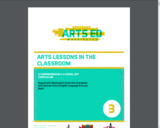
Fundamental concepts and skills are applied in new ways. Line is used to invent characters in monotype prints and show figures in action within drawings and wire sculptures. Elements of scale, horizon, overlapping, shape and texture in painting and printmaking reference specific time and place for settings. Students also visualize and write in response to art.
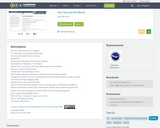
Nebraska Honors ProgramCLC Expanded Learning Opportunity ClubsArts Around the World Club CurriculumSpring 2019Grade Level: Kindergarten through second gradeIdeal Number of Attendees: 7-15 studentsGoal of Club: Increase the cultural and global awareness of studentsResources: Various Pinterest ideasContent Areas: Social Studies and ArtsFinal Products: Weekly crafts that are related to the country being studiedIntroduction to Club: This Arts Around the World club introduces students to other countriesand cultures through engaging craftsLength of Club: 1 hour and 15 minutesTips and Tricks: Have extra activities (such as coloring pages or worksheets) available forchildren who finish at a faster pace, and watch for students who are becoming distracted.
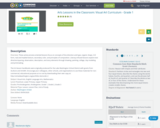
These active process-oriented lessons focus on concepts of line direction and type, organic shape, 3-D form, real and implied texture, secondary color, and principles of composition. Literacy-infused lessons explore text direction/spacing, observation, description, and story elements through drawing, painting, collage, clay modeling and printmaking.The K-6 lesson handbooks were originally produced for the Lake Washington School District with grants from 4culture and ArtsWA. Encourage your colleagues, other schools, and organizations to use these materials for non-commercial, educational purposes at no cost by downloading their own copy at: http://artsedwashington.org/portfolio-items/alic-2
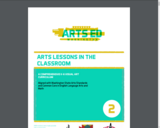
A broad range of art is created using concepts of contour and line type, abstraction, color palette, 3-D form, and positive and negative space. Students make both realistic and abstract drawings, relief prints, paintings, and paper sculptures. Literacy-infused lessons include making sketch/journal entries, inventing clay characters and illustrating stories and poems in collage.
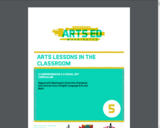
Skills are refined through making pen and ink drawings, watercolor paintings, and sculptures focusing on proportion, value, and scale. Translating words into pictures and pictures into words is investigated through depicting setting, combining shapes for meaning, using color for mood and responding to art. Students also create prints and then explain the printmaking procedure in writing.

Students will practice looking at a topic from multiple points of view, and will discuss whose voices are amplified and whose voices are silenced. This lesson is part of a media unit curated at our Digital Citizenship website called "Who Am I Online?".
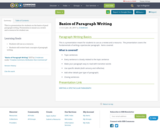
This is a presentation for students on the basics of good paragraph writing. Presentation is meant as a review and a resource for student use.

Contains instructions on how to make bath bombs and the sciencce behind why they fizz.
This is a nice end-of-term activity.
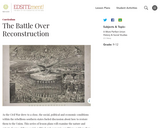
This curriculum unit of three lessons examines the social, political and economic conditions of the southern states in the aftermath of the Civil War and shows how these factors helped to shape the Reconstruction debate as well as the subsequent history of American race relations.
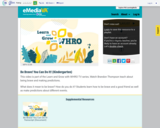
This video is part of the Learn and Grow with WHRO TV series. Watch Brandon Thompson teach about being brave and making predictions.
What does it mean to be brave? How do you do it? Students learn how to be brave and a good friend as well as make predictions about different events.

Explore the ideas and evidence that helped Charles Darwin create his theory of evolution.
GeoInquiries are designed to be fast and easy-to-use instructional resources that incorporate advanced web mapping technology. Each 15-minute activity in a collection is intended to be presented by the instructor from a single computer/projector classroom arrangement. No installation, fees, or logins are necessary to use these materials and software.
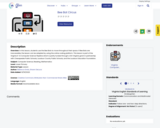
In this lesson, students use the Bee Bots to move throughout their space. If Bee Bots are inaccessible, the lesson can be adapted by using the online coding platform. This lesson is part of the Virginia K-12 Computer Science Pipeline which is partly funded through a GO Virginia grant in partnership with Chesapeake Public Schools, Loudoun County Public Schools, and the Loudoun Education Foundation.